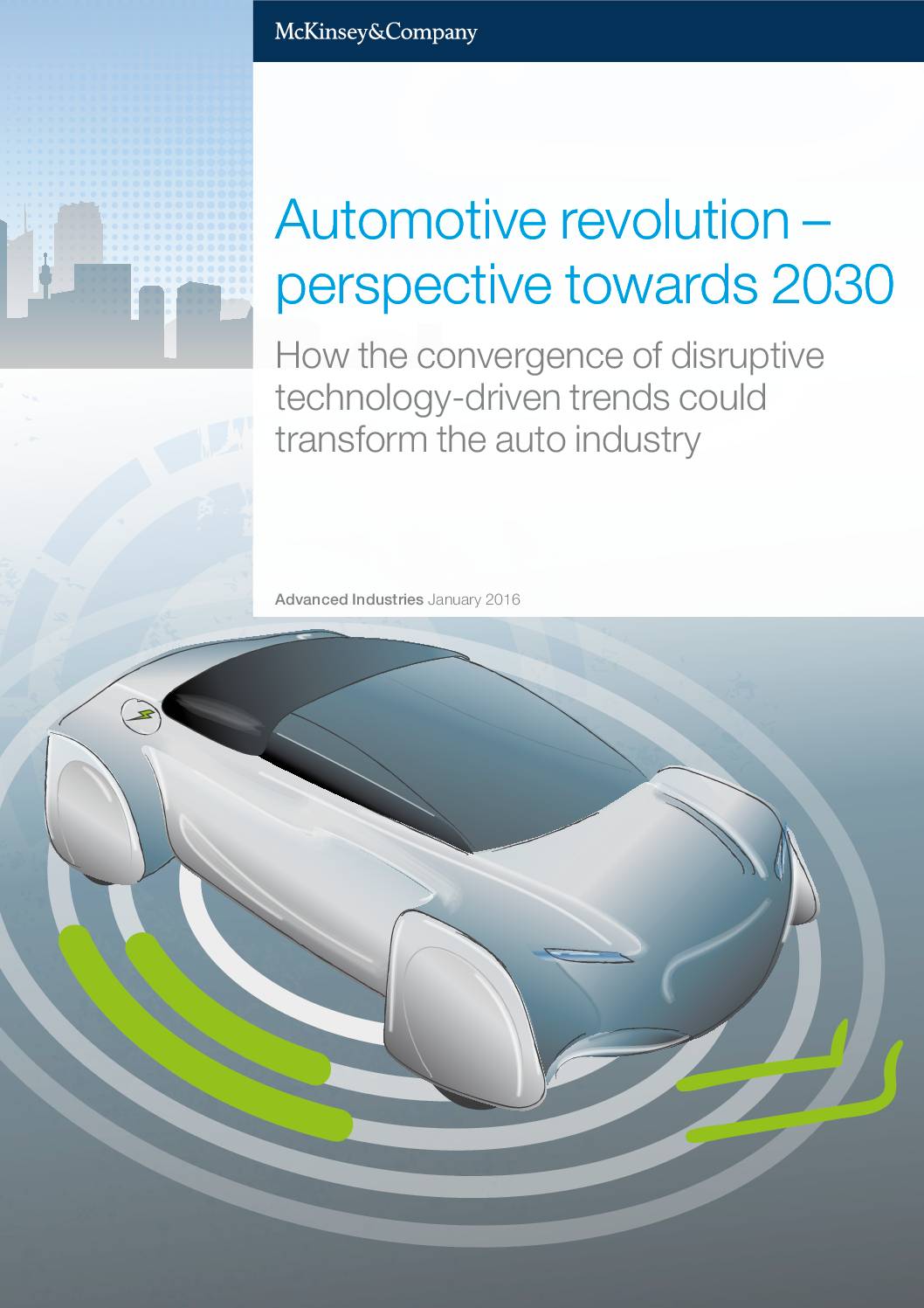Today’s economiesare dramatically changing, triggered by development in emerging markets, the accelerated rise of new technologies, sustainability policies, and changing consumer preferences around ownership. Digitization, increasing automation, and new business models have revolutionized other industries, and automotive will be no exception. These forces are giving rise to four disruptive technology-driven trends in the automotive sector: diverse mobility, autonomous driving, electrification, and connectivity.
Most industry players and experts agree that the four trends will reinforce and accelerate one another, and that the automotive industry is ripe for disruption. Given the widespread understanding that game-changing disruption is already on the horizon, there is still no integrated perspective on how the industry will look in 10 to 15 years as a result of these trends. To that end, our eight key perspectives on the “2030 automotive revolution” are aimed at providing scenarios concerning what kind of changes are coming and how they will affect traditional vehicle manufacturers and suppliers, potential new players, regulators, consumers, markets, and the automotive value chain.
This study aims to make the imminent changes more tangible. The forecasts should thus be interpreted as a projection of the most probable assumptions across all four trends, based on our current understanding. They are certainly not deterministic in nature but should help industry players better prepare for the uncertainty by discussing potential future states.
Share this

Sectors: Digital, Industry, Transport
Country / Region: Global
Tags: auto industry, industry, international development, sustainability, sustainability policiesKnowledge Object: Publication / Report
Published by: McKinsey & Company
Publishing year: 2016
Author: Paul Gao; Hans-Werner Kaas; Detlev Mohr; Dominik Wee
